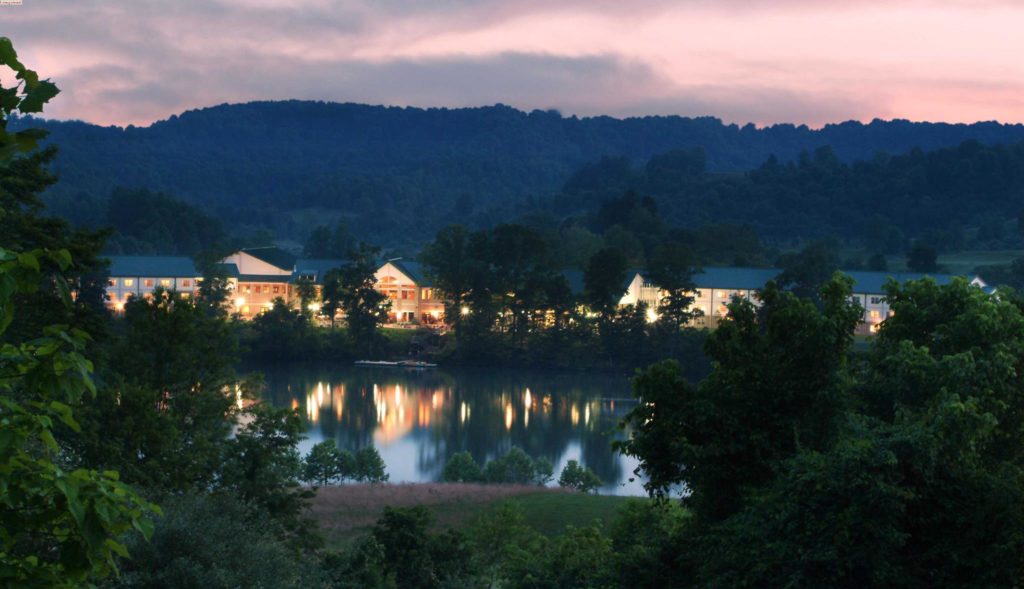We’ve all been there – a corporate meeting filled with PowerPoint slides and jargon-laden language. Our eyes start to glaze over, and our minds wander. We’re daydreaming about anything and everything else.
Now, imagine a corporate meeting that’s the complete opposite. A meeting where the content is engaging, the dialogue is lively, and we’re actually excited to be there. What’s the difference?
In short, it’s about incorporating opportunities for “white space.”
Let’s explore the concept of “white space” and learn what to look for in a meeting venue, thanks to some tips from our sales manager, Shelley Gutta.
Want Effective Corporate Meetings? Infuse White Space
What is White Space?
In a business context, white space refers to any time that’s not allocated for a specific activity. It’s those in-between moments where people are free to move about, chat and connect with one another. It sounds simple enough, but creating opportunities for white space can actually be quite challenging – especially if you’re trying to pack a lot into a corporate meeting.
Why is White Space Important?
Our brains are constantly bombarded with information from the moment we wake up until the moment we go to bed. We’re often jumping from task to task, never really giving ourselves a chance to fully process what we’re taking in.
Incorporating white space into a corporate meeting allows attendees to take a step back and absorb the content that’s being presented. It allows them to process information and ask questions rather than just zone out and be overloaded with information.
Shelley says, “it’s to help absorb the information you just learned.” She goes on to say, “having white space will help you better prepare yourself for really taking time to think about the information, absorb it and process it.”
Often when attendees travel to a corporate event, it’s nonstop “go-go-go,” as Shelley would say. “And how many times have you been to a meeting or an event, and you’ve been there, and you’ve left, and you’re like, well, I was there, but I enjoyed absolutely nothing of the venue or the city or any of it. Or even absorbed what was learned because of the overload.”
Being bombarded with content eventually becomes white noise.
The fact is that we all need a moment of break to digest the experience.
How to Incorporate White Space Into Your Meeting
Not sure how to incorporate white space into your next corporate meeting? Here are a few ideas:

Plan a Loose Agenda
This may sound counterintuitive, but one of the best ways to incorporate white space into a meeting is to plan a loose agenda. Rather than filling every minute of the meeting with content, leave some time open for attendees to ask questions, share their thoughts and take an extended “brain break.”
Shelley recommends planning for free time. “Give attendees the opportunity to enjoy a lake, a nature hike, a round of golf, or hang by the pool. But don’t schedule it specifically.”
Make Space for Informal Moments
Much of the magic of a corporate meeting happens not just during the hours of formal meeting time each day, but between those points, during social time. We like to call these informal moments.
By giving meeting attendees room to breathe, time to clear their minds, and scenic grounds to walk around, they’re often able to de-stress and think differently than they would back home.
A large percentage of productivity actually happens during those times when attendees are in casual, small group settings – sometimes on a hike, on the lake, or by simply taking in the natural environment around them.
YOU MAY ALSO ENJOY: 7 Reasons Including Outdoor Space in Your Next Meeting is a Must!
Incorporate Movement Into the Agenda
In addition to incorporating white space into the overall meeting design, it’s also important to include opportunities for movement into the schedule. This could be anything from a 10-minute walking break between sessions to planned activities like yoga or hiking.
“You want to make sure that people are getting up, moving around, changing their scenery,” Shelley says. “All those things will help with the overall experience and help people absorb the content.”
Choose the Right Venue
Choosing the venue can also make a big difference in incorporating white space. Shelley says access to nature is a huge benefit when selecting a venue.
Nature plays a big part in a successful event. “Considering everything that we’ve all just recently been through, there seems to be a shift in everybody’s or most people’s need to reconnect with nature.”
Recently, West Virginia has been named on three top ten lists of places to visit because of the great natural setting of rolling hills and lakes and rivers and mountains.
“It’s a beautiful, beautiful place to visit.” She says, “you know, you can have that white space and get out on a nice nature hike.”

What makes Stonewall Resort Unique
Stonewall Resort is located in the picturesque mountains of West Virginia, offering breathtaking views and easy access to nature.
The resort offers a variety of activities and amenities, making it the perfect place to incorporate white space into your corporate meeting. From hiking and biking trails to a lake for fishing and kayaking, there are plenty of opportunities to get out and enjoy the fresh air.
Shelley says, “We have a 26-mile-long lake with a full marina. You can rent a fishing boat, a pontoon boat, get out on a kayak, a canoe, a stand-up paddleboard, or just sit by the lake and enjoy the rolling hills and the blue skies.”
And if you’re looking for something a little more relaxed, the resort also offers spa services, golfing, and indoor/outdoor pools.
When it comes to incorporating white space into a corporate meeting, Stonewall Resort is the perfect place to do it. With its beautiful setting and variety of activities, your attendees will be able to relax, recharge and absorb the content of your meeting.
RELATED: 7 Ways Stonewall Resort Stands Out For Your Next Meeting or Event
Taking the time to incorporate white space into your next corporate meeting may seem like a small detail, but it can make a big difference in terms of engagement and overall effectiveness. So next time you’re planning a meeting, keep this mind-blowing must-have in mind and watch as your attendees (and your results) start to soar.





